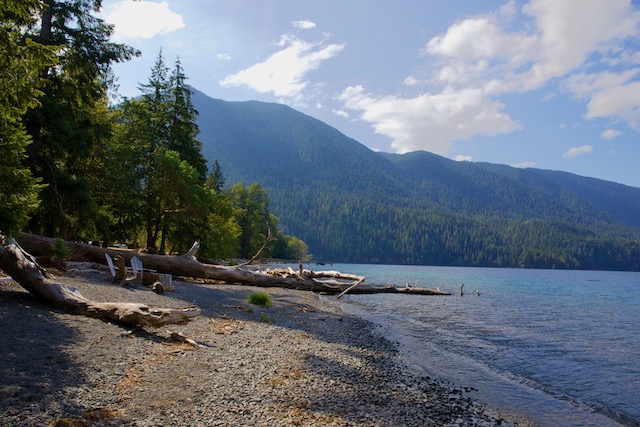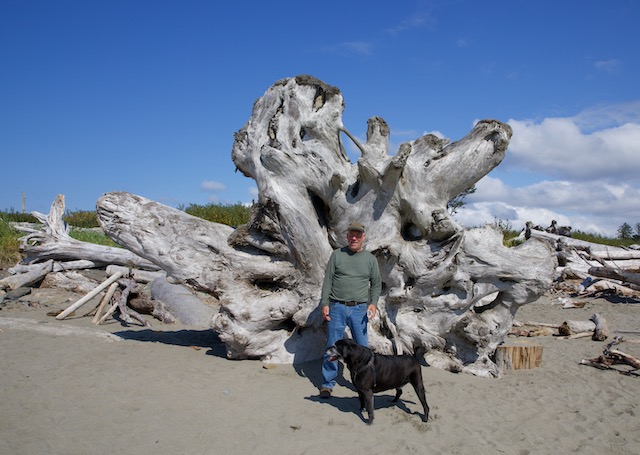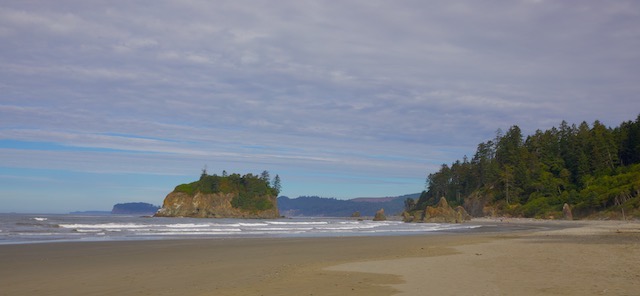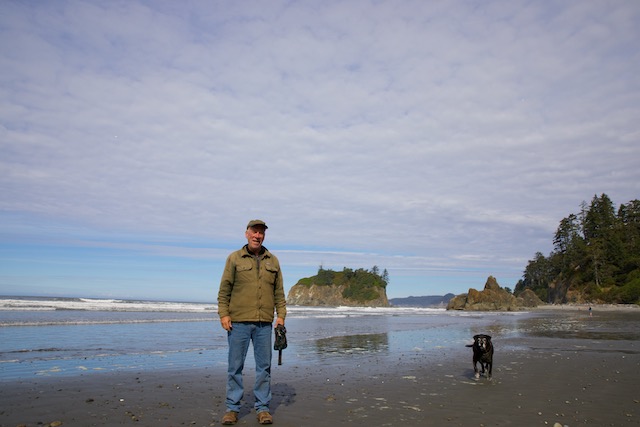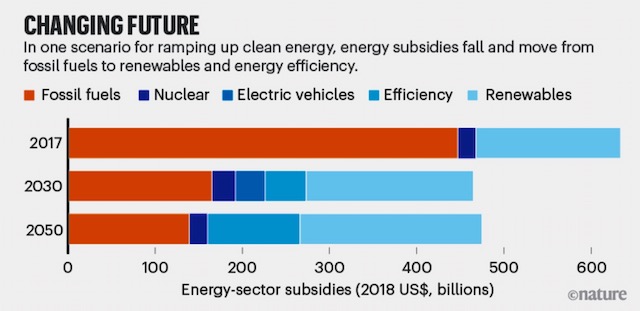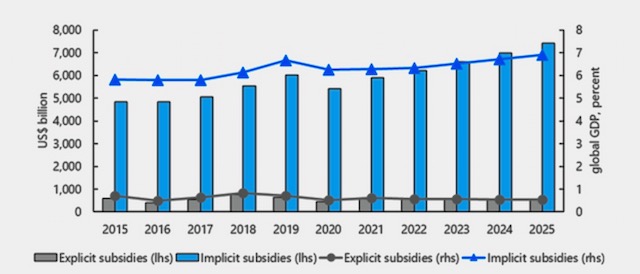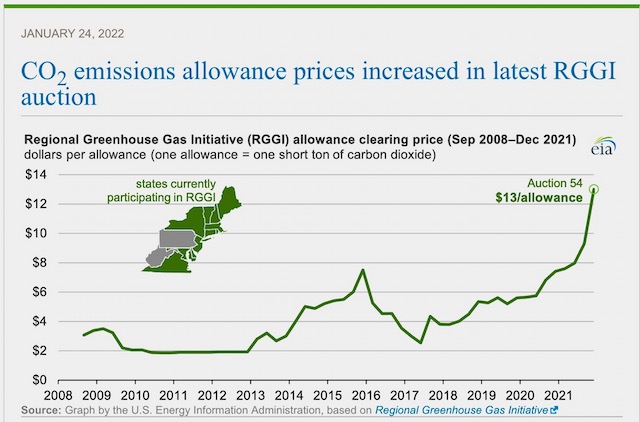Report Makes Broad Conclusion That Land Use Drives Chemical Risks, Not Wastewater
Conclusions Are Misleading, Not Supported By Science, And Conflict With Prior Research
Flawed Conclusions Echo Agenda Of Foundation Funder, Big Pharma, And Chemical Industry
The second presentation was given by Chief Scientist John Bunnell from the Pinelands Commission. The purpose of this presentation was to gain access to borough property to conduct a scientific survey-study of fish, amphibians and water chemistry in streams above and below two different municipal wastewater treatment plants.
Hanold said he was fearful that the study might result in cost-prohibitive regulations that would impact the residents of Medford Lakes unfairly.
Bunnell said that the Pinelands Commission was conducting this project for scientific findings only, not regulatory pursuits….
Bunnell said that the total cost of their project is $684,800; of which $450,000 was granted by the Academy of Natural Sciences, $125,000 given from the Pinelands Commission, and $109,800 kicked-in by the U.S. Geological Survey. [Note: no mention of Wm. Penn Foundation funding. That’s how money laundering works.] ~~~ Pine Barrens Tribune
[Updates below]
This is Part 2 of my critique of the Pinelands endocrine disruptor story (read Part 1 here).
Part 1 focused on the funder of the study, the WM. Penn Foundation, and the economic interests, links to the chemical industry, and policy agenda of that Foundation.
In Part 2 today, we critique flaws in the study and show how they are related to and reflect the interests of the Wm. Penn Foundation.
Let me begin with a hypothetical analogy that can illustrate the basic flaws with the study:
Suppose the Donut Manufacturers Association (DMA) funded a study of the impacts of donuts on obesity. Several prior studies had found a causal link between donut consumption and obesity. Based on these studies, the public was outraged and the Government was considering laws and regulations to reduce donut consumption and to require that donut manufacturers compensate the public and individual people for the harms of obesity.
The DMA masked their funding of the study by laundering their funds through a local DMA funded pseudo-academic outfit.
The study sampled 21 locations 4 times over 4 years: 20 locations were samples of people riding in professional bicycle events and just one was a sample of people visiting a very small donut shop in a very small rural town.
The DMA funded study found that there was little “obesity” – a health condition they described by the term corpulentia, a technical word no one ever heard of and “donuts” were described as “complex carbohydrate mixtures” – related to donut consumption, and that corpulentia (obesity) was driven primarily by how many miles per week a person rode their bike.
The study found that, yes, some people who visit donut shops exhibit corpulentia, but not all people and at relatively low rates. The study concluded that the corpulentia (obesity) in these 4 people from the donut shop location also could be related not only to donut consumption, but to the miles of bicycling they rode per week.
The findings of this study conflicted with prior research. The study was conducted at a small donut shop, which the research report noted as a “limitation” in a small passage at the very end of the paper. The Title of the Study was “Potential Corpulentia Effects Of Complex Carbohydrate Mixtures and Bicycle Riding”.
Obviously, this study would be denounced as biased and junk science promoted by an industry association with an agenda. The DMA would be criticized. And the scientists who conducted the study would suffer harm to their reputations, professional careers, and credibility.
Well, something very similar to this absurd hypothetical happened in the Wm. Penn funded Pinelands endocrine disruptor study. Virtually every absurd flaw I mentioned in the above hypothetical (and more!) was seen in the Pinelands study. Let me summarize those flaws:
I) Sweeping conclusion that land use is driver, not wastewater, is not supported by data and conflicts with prior research
The study broadly concludes that land use – not municipal wastewater discharge – is the driver. (and it even has “potential health effects” in the title, downplaying risks and impacts from the get go!):
With respect to the term “wastewater”, it is limited to municipal sewage treatment plants. Industrial chemical discharge, directly to surface or ground water, or indirectly to a municipal sewage treatment plant, is not even considered or mentioned.
Based on that finding, the study emphasizes the following in the abstract and prominently right up front: (note particularly that scope of the conclusion geographically is described by the vague term “elsewhere”, which means beyond the boundaries of the Pinelands – emphases mine);
“Limited differences in contaminant concentrations were observed in reference and degraded wetlands but for streams/lakes, results indicated that landscape alteration, (upland agricultural and developed land) was the primary driver of contaminant concentrations rather than municipal wastewater. ….. These findings are critical to support the conservation, protection, and management of a wide range of aquatic species in the Pinelands and elsewhere as habitat loss, alteration, and fragmentation increase with increasing development.
I support aspects of the conclusion that “a wide range of aquatic species in the Pinelands and elsewhere as habitat loss, alteration, and fragmentation increase with increasing development.”
But I have strong objections to the findings on “landscape alteration” as the “primary driver” as well as the express expansion of the findings and conclusions beyond the boundaries of the Pinelands, i.e. use of the word “elsewhere”.
My objections are based on the following:
a) The sampling method and data (selection of stream, number of sites, location of sites, number of outfalls and the volume and chemical characteristics of wastewater flow of upstream outfalls, etc) are highly biased, not representative, not statistically valid, and can not support the major and unequivocal finding that land use – not wastewater – is the driver.
- Of the 21 sites sampled, ONLY 2 were below wastewater outfalls
- Of those 2 sites, only one is located on a stream that receives municipal wastewater discharge
- of the 84 samples, only 4 are from the location on a stream below a municipal wastewater outfall
- the upstream municipal wastewater outfall is very small, slightly more than 2 MGD serving a little over 25,000 people (I assume that there are no industrial pre-treatment permits issued to users of the POTW, a key regulatory fact not included in the study)
Here the text:
“The stream site below the WWTP outfall received an average continuous sanitary wastewater discharge of 2.013 million gallons per day (mgd, 2017–2020) from a municipal WWTP that served an estimated population of 25,584″
This is flawed design that can not support reliable sweeping findings:
- The stream sample location is reported to be impacted by just this one small municipal discharge “outfall”, with no other municipal or industrial point sources influencing water chemsitry
- the very limited data on this sample location shows significantly higher concentrations of both organic and inorganic chemicals detected below the single outfall
(Looking for the impacts from endocrine disruptors in the Pinelands is like sampling for obesity among a population of professional cyclists! – One sample downstream of a tiny municipal sewage treatment plant is like one sample at a donut shop!)
b) the study’s objectives and the 2 hypotheses tested did not include apportionment of chemicals sampled between non-point and point sources. Read them closely, from text:
-
“Exposures to multiple organic and inorganic contaminants will occur and the concentrations/detections of certain contaminants (e.g., personal care products and industrial chemicals) will differ among point and non-point sources (Hypothesis 1)”
-
“A greater incidence of endocrine disruption and parasites will occur in fish and frogs collected from sites impacted by both point and nonpoint sources compared to reference locations (Hypothesis 2).”
Those two hypotheses say nothing about apportioning chemical exposures between point and not point sources or determining which source is the “driver”.
c) The literature cited by the study does not support the finding that non-point sources & land use are drivers: (just the opposite: prior USGS research found chemicals impacting water quality and biota was from pharmaceutical plants and wastewater discharges!)
“Point and nonpoint sources have been identified as primary drivers of contaminant exposures to aquatic organisms in both urban and agricultural landscapes. Surface-water discharge of industrial and municipal wastewater is one of the major point sources of contaminant mixtures to aquatic systems. Conversely, nonpoint sources tend to be more difficult to identify and include on-site septic systems, stormwater basins, large-scale animal feeding operations and the application of pesticides, fertilizers, manure, and biosolids in urban and agricultural settings” […]
“Numerous studies have linked exposure to contaminants from both point and nonpoint sources to measures of endocrine disruption in male fish and frogs”
Yet despite the facts that:
1) the hypotheses of the study do not seek to apportion point v. non-point pollution;
2) the study’s design and sampling methods do not permit apportionment of point v. non-point;
3) the literature cited makes no apportionment;
4) there is just 1 point source influence municipal discharge site sampled (of 21) relied on;
4) there was no “industrial” sources included in the study; and
5) the discussion consistently aggregates point and non-point pollution;
The study makes sweeping findings that land use and non-point pollution – not wastewater – is the driver.
The conclusion that the results apply “elsewhere ” is not supported by the literature cited or the data collected and is based on data that is totally unrepresentative of both NJ and “elsewhere”.
The results are limited to the ecosystems of the Pinelands (and not even Pinelands water quality).
The study is grossly not representative, in terms of location i.e. the relatively pristine Pinelands ecosystem; the tiny presence and abundance of point source influenced surface and ground waters; the non existent presence and density of chemical industry manufacturing and wastewater discharge; or the failure to select a representative surface water body influenced by point sources (industrial and municipal).
In reality, the majority of NJ streams and rivers are impacted by hundreds of wastewater outfalls from industrial and municipal dischargers that discharge hundreds of millions of gallons per day.
It is rare for just one discharger outfall to be present and impacting water quality.
Additionally, most of the municipal wastewater plants involve pre-treatment permits for industrial users.
I suspect that the limited data relied on regarding impacts of wastewater are not even representative of Pinelands surface waters.
Additionally, the findings of the study, conducted by USGS and Pinelands Commission scientists, closely match the agenda of not only the Wm. Penn Foundation funder, but those of the Pinelands Commission.
The study’s findings emphasized that land use and non-point pollution – not point sources or municipal and industrial discharges – as the drivers of impacts. The express and implied management strategies mention conservation and land use, not regulation of chemicals or point sources.
Even for the point source impacts findings, the study interpreted data to make misleading claims that non-point sources played a contributing role, thereby diminishing already diluted findings about the point source role..
The study’s findings and recommendations fit the agenda of the Pinelands Commission, a land use agency that regulates land use and manages non-point source pollution and conservation programs, not point source regulatory or chemical industry oriented programs.
At a minimum, that creates a public appearance problem: the Commission has a hammer and it found a nail.
Only at the conclusion (final paragraph) of the study, after sweeping findings in the abstract and findings and analysis, are severe limitations in the study mentioned, and those limitations are tied to biased findings:
Aside from personal care products which were higher below the WWTP outfalls, contaminant mixtures were more closely related to nonpoint sources from upland agriculture and development than to small municipal wastewater point sources.
The followup study recommendations also are biased and limited in scope as well, to “parasite prevalence”, there is no recommendation about followup study of ED impacts like dual sexed fish et al:
This was a small study with limited sites and species, so future work could expand the scope both temporally and spatially to determine the potential effects of contaminant mixtures more broadly on parasite prevalence and diversity in both native and non-native species across a gradient of anthropogenic alteration
Finally, the study uses technical jargon to mask the public’s recognition of both endocrine disruptors (described as “complex chemical mixtures”) and adverse effects like “dual sexed fish” (described as “oocytes”).
I call this pattern of bias borderline junk science, given flaws in the study’s design and biased and unrepresentative sampling methodology, its conflict with prior research regarding point source chemical discharge impacts on biota (dual sexed fish!), its broad sweeping conclusions that lack support in the biased data collected, and its minimization of limitations of the study which are buried, and it use of obfuscatory jargon.
II) Questionable Findings Perfectly Align With The Wm. Penn Foundation Funder’s Agenda
Part 1 described the Wm. Penn Foundation, it’s relationship to the chemical industry, and its Foundation funding objectives and watershed program that are: limited in focus to non-point sources of pollution – including agriculture – and non-chemical industry water pollutants like nutrients and to water resource management objectives involving voluntary land use and conservation tactics.
Remarkably, the Pinelands endocrine disruptor study the Wm. Penn Foundation funded echoes the Penn Foundation’s narrow emphasis on non-point source pollution (described as “the driver”), land use (another “driver”), and conservation oriented management strategies, while ignoring the role of the chemical industry, point source discharges and point source chemical regulatory programs and management strategies.
As a result, adverse impacts to human health and the environment from and efforts to regulate the chemical industry, the point source discharge of chemical pollutants, and the remediation of chemical contamination of water quality, sediments, biota and public health are all ignored.
Which is exactly what Rohm and Haas, Dupont, Big Pharma, and The Chemistry Council ordered.
(From a scientific integrity, conflict of interest, and bias standpoint, the Wm. Penn Foundation funding this study is the relational equivalent of the Donut Manufacturers Assc.. Their funding was laundered through a pseudo-academic organization. The study’s findings are in total alignment with the funders’.)
[End Note: I sent the following email request to the USGS prime scientist, and have yet to receive a reply:
———- Original Message ———-
From: Bill WOLFE <>
To: “sbreitmeyer@usgs.gov” <sbreitmeyer@usgs.gov>
Date: 09/11/2022 5:25 PM
Subject: Bunnell – USGS ED Study
Hi Sara – I meant to copy you on my note below to John Bunnell, but I didn’t have your email. Appreciate your thoughts.
One immediate question: Is this an official USGS peer reviewed and formally approved research product? Has it been posted on the USGS website?
[Update 9/14/22 – I received a reply this morning from USGS as follows: (they did not reply to the above substantive criticism, which I sent to USGS and Pinelands scientists via email:
Yes, the product was peer reviewed and approved by the USGS.
Not yet. As it was just released by the journal, it has not yet been added to the USGS Publications Warehouse.
[Update 1: the initiation of the study was announced by USGS]
[Update 2: the USGS updated the original announcement, and including this:
The biological findings will be evaluated in the context of chemical concentrations in water samples. These findings will be compared with findings in other regions of the country.
However, unless I missed it, the study did not do this comparison: “These findings will be compared with findings in other regions of the country.”
I think there was just one sentence about and a link to otters research other findings on wastewater treatment.
[Update 3: Even though NJ DEP was not involved in the research, they made sure to post an outline of the study on the DEP website.
No doubt that chemical industry and sewage treatment plants will use this study to delay and avoid DEP regulation.
[Update 4 – A different USGS Office (WVa) made a presentation to the Pinelands (sorry, not dated). They conflict with the study, see:
[Update 5 – the study is being picked up by other websites. Check out this conflict of interest statement, which address conflicts that I have not alleged. I am not concerned about individual financial interests or personal relationships. I am concerned about the influence of the funder on the research design and conclusions and the fact that Pines Commission researcher was involved and found the hammer and nail:
Conflict of interest statement
Declaration of competing interest The authors declare that they have no known competing financial interests or personal relationships that could have appeared to influence the work reported in this paper.
[Update 6: Just found a NJ Future Report by Dan Van Abs study (Rutgers, former DEP) 2014 Report on land use and water quality in the Pinelands. Dan has similar limited focus and mentions endocrine disruptors just once, from septic system sources.
[Update 7: Local governments in the Pinelands were aware of the study and its financial implications. They “invited”, i.e. called the Commission staff on the carpet before the study was even complete. USGS knew of the implications of this research and they were getting political pushback. Check this out:
Mayor Cranston invited the representative to explain the request.
John F. Bunnell (Chief Scientist) for the Pinelands Commission stated that they had received a four-million dollar Federal Grant to study potential effects of endocrine disrupting chemicals on fish and frogs in the Pinelands. The testing area would be above and below our Wastewater Treatment Plant and above and below the Treatment Plant in Evesham Twsp.
Council and Mr. Bunnell discussed; the length of the study, the fact that the Borough already meets or exceeds NJDEP standards for discharge and the potential financial burdens that the study results may place on the Borough.
Mayor Cranston thanked Mr. Bunnell for his attendance and presentation.
[Update 8 – The Pinelands Commission also was getting pressure from fracking and pipeline opponents regarding endocrine disruptors (of course, pipelines were not considered as a source of ED’s in the study)
The oil and gas industry isn’t required to disclose the chemicals they use in the process, but many are known endocrine disruptors.
[Update 9 – although I linked to them in part 1, I think I need to write Part 3 in this series to list the prior USGS studies on ED’s and wastewater. I’ll do that soon.


